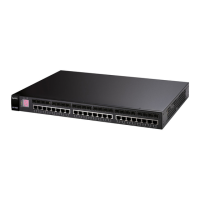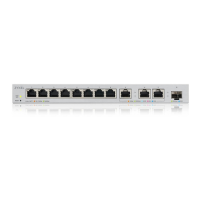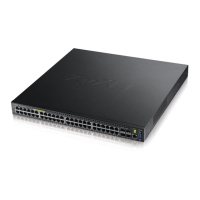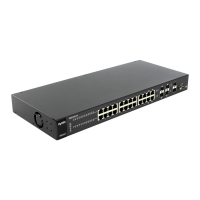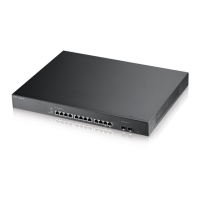Chapter 54 DHCP
XGS4600 Series User’s Guide
482
CHAPTER 54
DHCP
54.1 DHCP Overview
This chapter shows you how to configure the DHCP feature.
DHCP (Dynamic Host Configuration Protocol RFC 2131 and RFC 2132) allows individual computers to
obtain TCP/IP configuration at start-up from a server. You can configure the Switch as a DHCP server or
a DHCP relay agent. When configured as a server, the Switch provides the TCP/IP configuration for the
clients. If you configure the Switch as a relay agent, then the Switch forwards DHCP requests to DHCP
server on your network. If you do not configure the Switch as a DHCP server or relay agent then you must
have a DHCP server in the broadcast domain of the client computers or else the client computers must
be configured manually.
The Dynamic Host Configuration Protocol for IPv6 (DHCPv6, RFC 3315) is a server-client protocol that
allows a DHCP server to assign and pass IPv6 network addresses, prefixes and other configuration
information to DHCP clients. DHCPv6 servers and clients exchange DHCP messages using UDP. Each
DHCP client and server has a unique DHCP Unique IDentifier (DUID), which is used for identification when
they are exchanging DHCPv6 messages. The DUID is generated from the MAC address, time, vendor
assigned ID and/or the vendor's private enterprise number registered with the IANA. It should not
change over time even after you reboot the device.
54.1.1 What You Can Do
• Use the DHCPv4 Status screen (Section 54.3 on page 484) to display the server status and relay mode.
• Use the DHCPv4 Server Status Detail screen (Section 54.3.1 on page 484) to view details regarding
DHCP server settings configured on the Switch.
• Use the DHCPv4 Option 82 Profile screen (Section 54.4.2 on page 487) to create DHCPv4 option 82
profiles.
• Use the DHCPv4 Global Relay screen (Section 54.4.3 on page 488) to configure global DHCPv4 relay.
• Use the DHCPv4 Global Relay Port screen (Section 54.4.4 on page 489) to apply a different DHCP
option 82 profile to certain ports on the Switch.
• Use the VLAN Setting screen (Section 54.4.6 on page 491) to configure your DHCPv4 settings based on
the VLAN domain of the DHCPv4 clients.
• Use the DHCPv4 VLAN Port screen (Section 54.4.7 on page 492) to apply a different DHCP option 82
profile to certain ports in a VLAN.
• Use the DHCPv6 Status screen (Section 54.5 on page 495) to see information on the DHCPv6 server.
• Use the DHCPv6 Information screen (Section 54.6 on page 495) to configure DHCPv6 and DNS server
settings on the Switch.
• Use the DHCPv6 Prefix Delegation screen (Section 54.7 on page 496) to configure DHCPv6 client and
IPv6 prefix settings for a specific VLAN on the Switch.
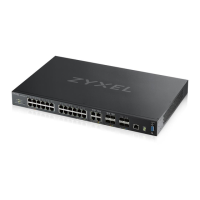
